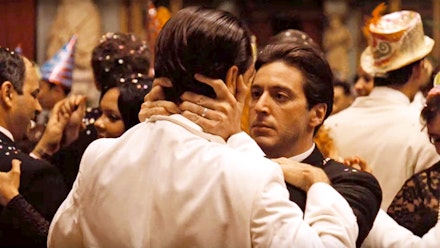The Godfather is a more important film; of course it is. But The Godfather Part II is a better film. It's more ambitious, it's more elegiac, it delves deeper into the soil of Italian-American myth – plus, what were they thinking, trying to match the critical and commercial dynamite of the first film? The Godfather Part II was, from conception upwards, an insane project. But it worked.
When The Godfather premiered in New York on March 14 1972, co-screenwriter and novelist Mario Puzo had already started work on the sequel. That's how sure Paramount were that they had a monster hit on their hands, despite some exhibitors turning up their noses at a preview screening. Too little action, too much talking, and too long — proof that in no way are exhibitors a bunch of popcorn-selling philistines. After two days of release, cinema managers were being offered bribes by punters desperate to get to the front of the queues which busted the proverbial block. There was something of the Mafia about the way in which Paramount doubled ticket prices for weekend shows to squeeze extra revenue from their new cash cow.

The sequel, announced on April 16 with the working title 'Don Michael', was a commercial inevitability ("When you've got a licence to make Coca-Cola, make Coca-Cola!" said Charlie Bluhdorn, head of Gulf & Western, who owned Paramount). The Godfather grossed $101 million in its first 18 weeks, and nobody was going to stop the studio having another cake and eating it. But Francis Ford Coppola, the young director whom the studio had almost fired from The Godfather but who was now feted by Hollywood and the world, wasn't that interested. So they offered him a million dollars. plus a huge 13% of the profits and total artistic control. Altogether, now: it was an offer he couldn't refuse.
The Coppola-Puzo masterstroke was to develop the saga in two directions, forwards through the Faustian ascendance of Don Michael, and backwards into the early 1900s, tracing Vito Andolini's first steps into Mafiahood.
Thus, out of this sticky climate of money-grabbing corporate opportunism, did cinema's greatest Part II emerge. Pub debates about the diminishing returns of the sequel usually collapse at the mention of its name. So why does it work? Why isn't it Police Academy 2: Their First Assignment? Much of it has to do with the unique power of its own Part I, which established its family of characters so vividly. Audiences were gagging for more of Michael, Tom, Kay, Fredo and Connie. But the Coppola-Puzo masterstroke was to develop the saga in two directions, forwards through the Faustian ascendance of Don Michael, and backwards into the early 1900s, tracing Vito Andolini's first steps into Mafiahood (he earns the surname Corleone — the name of his home village — through a mix-up at Ellis Island's immigration control).

As with all of Coppola's best work, the casting was inspired – and as with The Godfather, fans can while away hours mulling over who might have been cast. Try this one: dying Miami mobster Hyman Roth —played with precision by acting coach Lee Strasberg in the film — could have been Laurence Olivier, Elia Kazan or blacklisted screenwriter Dalton Trumbo. Robert De Niro, plucked from the "rising star" racks after Mean Streets, seems born to play the young Marlon Brando. Pacino, Coppola's wild card in casting The Godfather, grows into the central role of Michael in perfect parallel with his character, and Diane Keaton proves the quiet lynchpin (which is no mean feat in this necessarily male dominated film).
Everything that was majestic and mythic about The Godfather is more so in Part II, with scenes deliberately matching the original. Author of the essential Godfather Book, Peter Cowie, describes the two-part saga in musical terms – as "Coppola's suite", with bass lines, motifs and rhyming patterns. "As a whole," Coppola said, "the first film ought to haunt the second like a spectre." So instead of constantly reminding us that the first film is better, Part II builds on its operatic sweep and cranks up the drama, both narratively and visually. Cinematographer Gordon Willis goes into sublime sepia overdrive for the flashbacks. Production designer Dean Tavoularis tops his own evocative 1940s New York streets with a living, breathing Italian immigrant community circa 1912 (actually the Ukrainian quarter). The epic 26-minute wedding scene that opened Part I is echoed in Part II by the altogether tackier confirmation party at the new Corleone compound in Lake Tahoe (the lake itself claiming the life of Michael's own brother in Part II's chilling climax).
Actually, claiming Part II's superiority over Part I is like saying Lennon's better than McCartney. One cannot now exist in isolation from the other. They must be watched by anyone who loves American film consecutively – and not in the form of 1977's seven-hour TV omnibus, which, though Coppola-curated, puts the story into chronological order for dimwits. Apparently, they made a Part III too.








